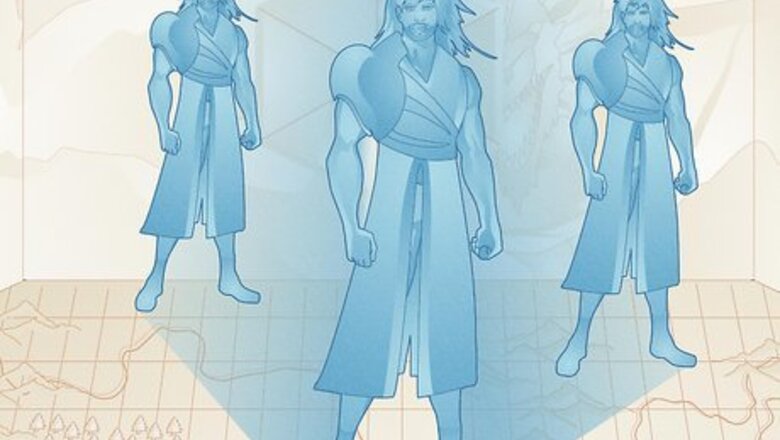
views
- Mirror Image is a 2nd-level illusion spell. Casting the spell creates 3 duplicates of your PC, mimicking their movements and confusing enemies.
- Each duplicate has an armor class equal to 10 + your PC’s Dexterity modifier. To see if enemies hit your PC or their duplicates, roll a d20.
- While you have 3 duplicates, you must roll a 6 or higher to have an enemy hit a duplicate. With 2 duplicates, you must roll an 8; with 1 duplicate, you’ll need an 11.
What is Mirror Image in D&D 5e?
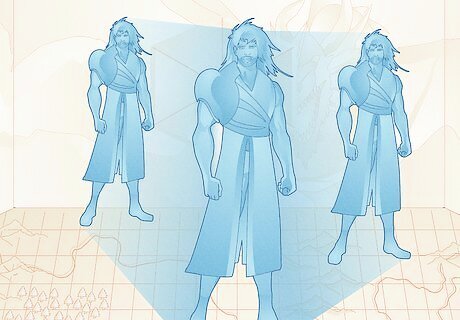
Mirror Image is an illusion spell that creates duplicates of the caster. When you cast the Mirror Image spell, 3 illusory duplicates of your player character (PC) appear in their space. The duplicates mimic your PC’s movements for the spell's duration, making it impossible for enemies to track which version is real, creating added protection for your PC. Range: Self Target: Self Casting time: 1 action Components: Verbal and somatic Duration: 1 minute
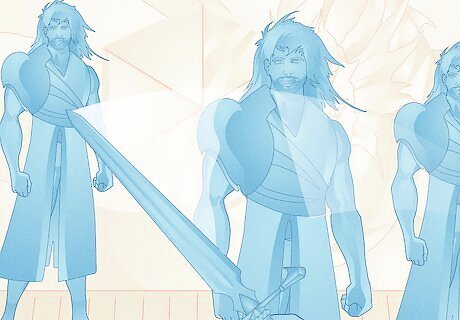
The duplicates can potentially misdirect enemies and draw attacks. When your PC gets attacked while Mirror Image is active, roll a d20 to see if they actually attack one of the duplicates instead. With three duplicates, you must roll a 6 or higher to transfer the attack to a duplicate. With two duplicates, you’ll have to roll an 8 or higher—and with just one, you’ll need an 11 or higher. In short, the more duplicates you have active, the easier it is to fool your enemies and avoid their attacks. Remember: you can also use an action to dismiss your PC’s duplicates at any time!
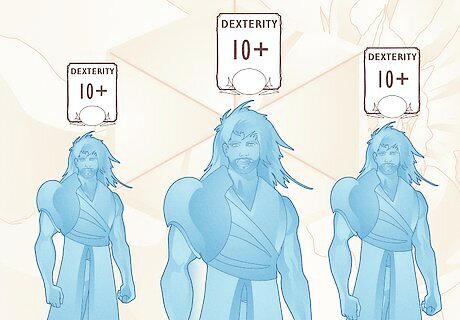
Each duplicate’s armor class equals 10 + your Dexterity modifier. If an enemy’s attack gets misdirected to a duplicate, they must make an attack roll against it. When an attack hits an illusory duplicate, that duplicate is destroyed automatically (with no damage rolls required), and the Mirror Image spell will end once all 3 duplicates have been destroyed (or when the duration is up). Your PC’s Dexterity (DEX) modifier is based on their DEX ability score, which measures their speed, agility, and balance. Creatures aren’t affected by the Mirror Image spell if they can’t see or rely on senses other than sight (like blindsight, for example). Furthermore, creatures with truesight can see through all invisibility and illusions—meaning they won’t be fooled by Mirror Image.
Mirror Image Mechanics

Magical effects that require saving throws won’t affect your duplicates. The rules of Mirror Image state that it only works when creatures target you with attack rolls. Thus, you can’t use the spell to avoid damage from effects based on saving throws—but, on the bright side, your duplicates also won’t disappear if you take damage after making a saving throw. Saving throws are rolls that determine whether your PC (or another target) can resist a harmful effect. For example, an area-of-effect spell like Fireball would force your PC to make a Dexterity saving throw—and Mirror Image wouldn’t be affected by that. In fact, any spell that deals damage without an attack isn’t affected by Mirror Image (including Magic Missile, which doesn’t require an attack roll or a saving throw).
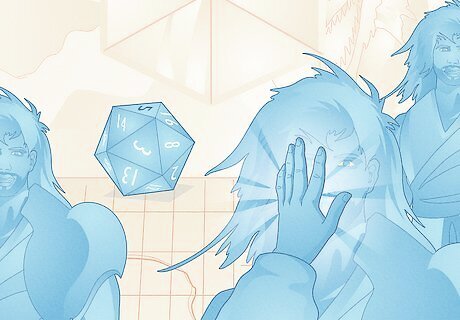
Foes still have to make attack rolls after seeing through the duplicates. Say you roll a d20 to see if an enemy hits one of your duplicates, but you roll a 5. That means they attack your PC instead—but they won’t automatically hit. Even if they see through the illusion, they still have to make an attack roll (as usual) and either meet or exceed your PC’s armor class to hit. Opportunity attacks, grappling attempts, and shoving are all considered attacks for the purposes of Mirror Image. In other words, if an enemy tries to grapple your PC (grab them), shove them, or make an attack of opportunity, they’ll still have to see through the illusory duplicates first.
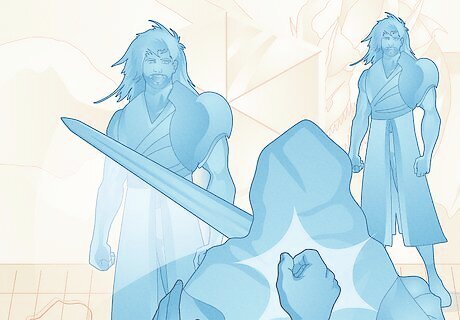
You can provoke Sentinel feat attacks when the duplicate gets hit. Sentinel is a feat in D&D 5e; when you have it, you can use a reaction to attack a creature within 5 feet after they attack an ally (someone other than your PC). Fortunately, Mirror Image duplicates count as “a target other than you,” meaning you can take Sentinel attacks on enemies who attack your duplicates. Did you know that if your PC turns invisible, the duplicates will too? Since they imitate your PC’s appearance, they’d automatically become invisible alongside the PC.
How to Use Mirror Image
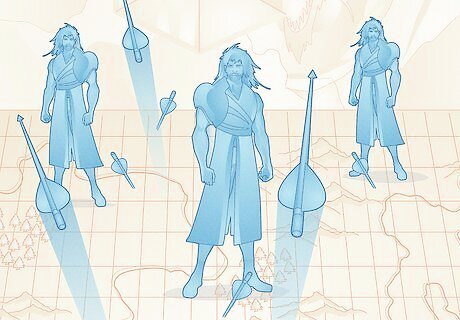
Reduce your chances of getting hit by enemies in battle. Need some protection for your spellcaster PC (since they normally don’t have much health compared to hardier classes like barbarians and rogues)? Mirror Image can reduce their chances of being hit significantly (55% with all 3 duplicates)—and your PC won’t even need to concentrate on the spell! It’s especially handy when your PC is surrounded by many low-level enemies. Even weak enemies can be dangerous in large numbers, but Mirror Image can stop them from landing too many hits.
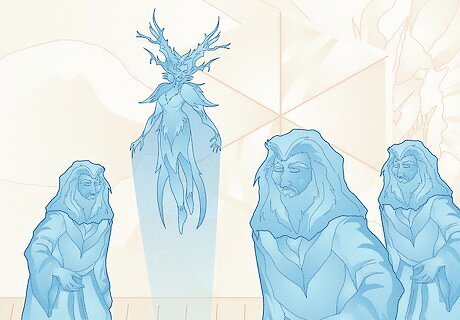
Buff your character so they can maintain concentration on a spell. In D&D 5e, some spells are marked as concentration, meaning your PC has to focus on them to maintain them. If your PC takes damage from an attack, they might lose their concentration. Mirror Image isn’t a concentration spell—and it’s perfect to pair with one because it reduces your PC’s chances of being hit. For example, say you cast Fly on a party member (which is a concentration spell). To ensure you don’t lose the spell if you get attacked, you might cast Mirror Image to deter enemies. You could also pair Mirror Image with Blur (another concentration spell). Blur gives creatures disadvantage on their attacks against you—making you even harder to hit than with Mirror Image alone!
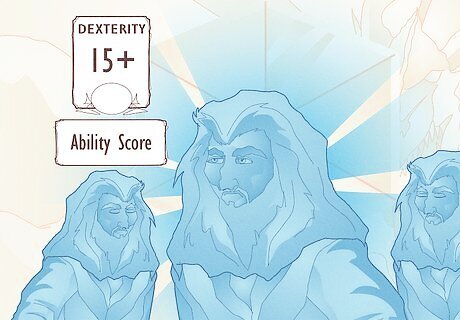
Raise your PC’s Dexterity modifier to make duplicates harder to hit. You can cast Mirror Image and use it to protect your PC no matter what their Dexterity ability score is—but the higher their score, the stronger the duplicates become. So, consider raising your character’s Dexterity score (either with Ability Score Improvements as you level up or by taking feats like Athlete or Elven Accuracy).
Is Mirror Image a good spell?
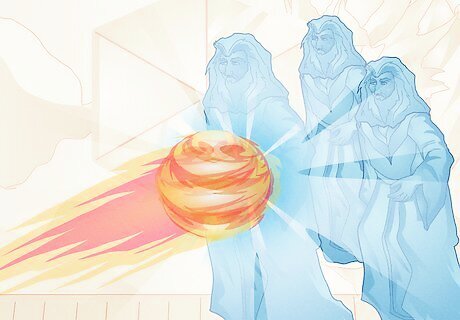
Mirror Image is a solid defensive spell for magic-using characters. It’s a simple spell but equally straightforward and strong. Ideal for spellcasters, it can grant your PC a defensive buff in battle and, in difficult fights, potentially prevent them from taking too much damage from enemies. Since it’s not concentration, your PC could easily use it to protect themselves for an entire minute (or 10 rounds of combat).
Which classes can use Mirror Image?
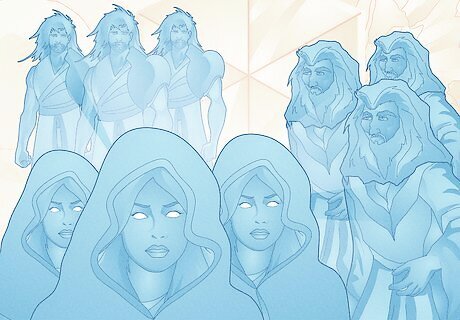
Sorcerers, warlocks, and wizards can cast Mirror Image. Because it’s an arcane spell, most arcane spellcasters in D&D 5e can use Mirror Image. Any other classes besides sorcerers, warlocks, and wizards can’t cast it, even if they have spells at their disposal. However, there are a few subclass exceptions: Clerics with the Trickery domain subclass can cast Mirror Image as part of their subclass features. Druids with the Circle of the Land (Coast) subclass can also use Mirror Image, even though other druid subclasses can’t.














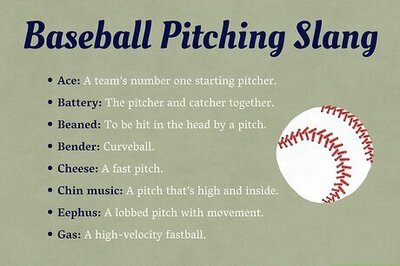



Comments
0 comment